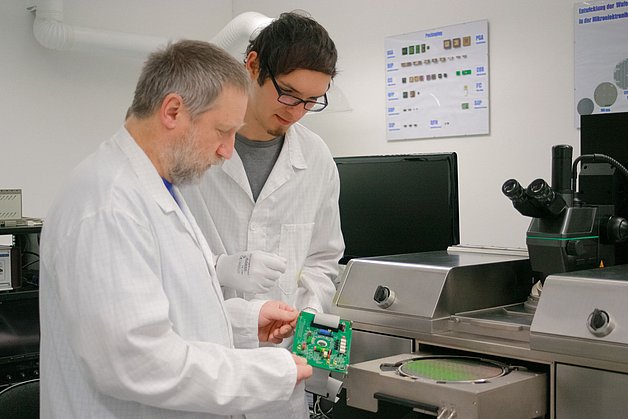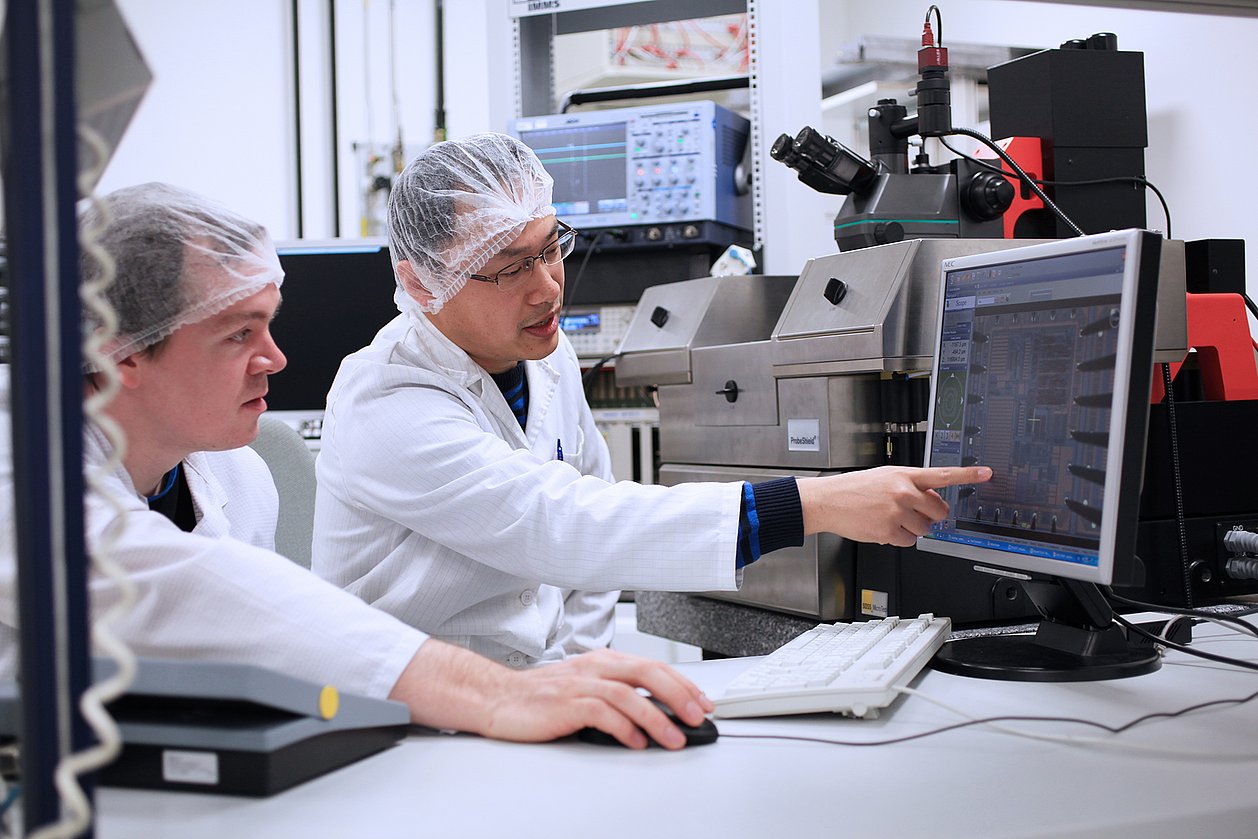Alexander Hofmann, M. Sc., doctoral candidate at IMMS
„When I was thinking what degree to read for and then what to work on at IMMS, the crucial factor was that I wanted results from my creativity and, most of all, to be of immediate help to people. What I appreciate at IMMS above all is the warm and constructive cooperation with colleagues, for it really encourages focused creativity, and complex problems are solved in an atmosphere of friendship.“
„When I was thinking what degree to read for and then what to work on at IMMS, the crucial factor was that I wanted results from my creativity and, most of all, to be of immediate help to people. The creation of interfaces between biology and technology which could help the blind to see, the paraplegic to walk again and such illnesses (such as Alzheimer's and Parkinson's diseases, MS, cancer, AIDS and many others) to be diagnosed faster so that treatment could be more efficient or there might be better understanding of how the brain works, this was important to me. Important not only because of the challenging, highly complex research questions but above all as the means of my fulfilling my potential in very varied ways.
While studying Biomedical Technology at Ilmenau TU, I worked on a project of the Fraunhofer IBMT (Institute for Biomedical Engineering), Sankt Ingbert, in which we were developing the biomedical instrumentation to monitor wirelessly the effort of breathing. In the Department of Biosignal Processing at my Technical University, I got involved in the development of a macroscopic piezoelectric energy harvesting system to enable biomedical implants to be energy-autonomous. In each case, the work reinforced my wish to continue researching analogue interfaces. They also revealed to me that there are many biological processes and everything that goes with them taking place in the tiny micro- and nano-cosmic worlds but that in the macrocosm of medicine their measurement is "blind", for otherwise the daily life of the patients will be too much restricted. There is a dearth of commercially available microsystems with technical applications specific to the comprehensive solution of medical problems at this microscopic level.
As soon as I had finished my degree in 2012, IMMS gave me insight in the 3DNeuroN project into that microcosm and I was able to gain valuable experience in the development of microsystems and the design of analogue integrated circuits (ASICs). In 3DNeuroN, we developed an ASIC for low-noise amplification of the signals from neuronal activity and for the stimulation of neurons. One of my tasks was to execute a complete analogue signal amplifier chain in the relevant microsystem. In another project, 4TPixel, I have been able to extend my knowledge of designing ASICs and microsystems that can be included in radiographic applications as CMOS image sensors, and in yet another, the IMMS work on biochips, I have helped design an ASIC for the recognition of pathogens at molecular level to support veterinary diagnostics on site. Currently I am evaluating the systems developed in the biochip project.
What I appreciate at IMMS above all is the warm and constructive cooperation with colleagues, for it really encourages focused creativity, and complex problems are solved in an atmosphere of friendship. I feel lucky to have found my fulfilment in this working environment.“
Related content

Project
INSPECT
We have developed a CMOS biochip with which the prostate-specific antigen can be quantitatively detected. The chip achieves the specifications required for clinical PSA tests according to Rili-BÄK for early cancer detection.

Project
MIMOSE
Integrated circuit for the early detection of cervical cancer and modular and mobile test system for the characterisation of sensor systems for in-vitro diagnostics

Project
3DNeuroN
In the project a microelectronic system was developed to three-dimensionally measure neuronal activity and stimulate nerve cells.
Project
4TPixel
IMMS’ ASIC development for a novel pixel cell enables low-noise high-quality recordings for X-ray photographs.
CMOS-basierte Sensorsysteme für die In-vitro-Diagnostik
Alexander Hofmann1. Benjamin Saft1.elmug4future, Technologiekonferenz, 21. - 22. Oktober 2025, Jena, Thüringen
1IMMS Institut für Mikroelektronik- und Mechatronik-Systeme gemeinnützige GmbH, Ehrenbergstraße 27, 98693 Ilmenau, Germany.Miniaturisierte CMOS-basierte Multi-Sensor-Plattform für die Analytik und Diagnostik
Alexander Hofmann1. Florian Kögler1. Elisa Hilbrecht1. Victoria Dimova1. Eric Schäfer1.17. Dresdner Sensor-Symposium, 25. - 27. November 2024, Dresden, DOI: doi.org/10.5162/17dss2024/P38
1IMMS Institut für Mikroelektronik- und Mechatronik-Systeme gemeinnützige GmbH, Ehrenbergstraße 27, 98693 Ilmenau, Germany.Miniaturisierter CMOS-ISFET-Sensor für die Analytik und Diagnostik
Alexander Hofmann1.DeviceMed, Das Community-Magazin, Jahrgang 20, Ausgabe 3, Juli 2024, Seite 34 - 36, www.devicemed.de/miniaturisierter-cmos-isfet-sensor-fuer-die-analytik-und-diagnostik-a-8083cd6a17f177898150dcafde09543c/, ISSN 1860-9414 | 69029
1IMMS Institut für Mikroelektronik- und Mechatronik-Systeme gemeinnützige GmbH, Ehrenbergstraße 27, 98693 Ilmenau, Germany.Lock-In Pixel CMOS Image Sensor for Time-Resolved Fluorescence Readout of Lateral-Flow Assays
Alexander Hofmann1. Benjamin Saft1. Peggy Reich1. Martin Grabmann1. Georg Gläser1. Max Trübenbach2. Alexander Rolapp1. Marco Reinhard1. Friedrich Scholz2. Eric Schäfer1.IEEE Transactions on Biomedical Circuits and Systems, vol. 16, no. 4, pp. 535-544, Aug. 2022, DOI: doi.org/10.1109/TBCAS.2022.3192926
1IMMS Institut für Mikroelektronik- und Mechatronik-Systeme gemeinnützige GmbH, 98693 Ilmenau, Germany. 2Senova Gesellschaft für Biowissenschaft und Technik mbH, Germany.





